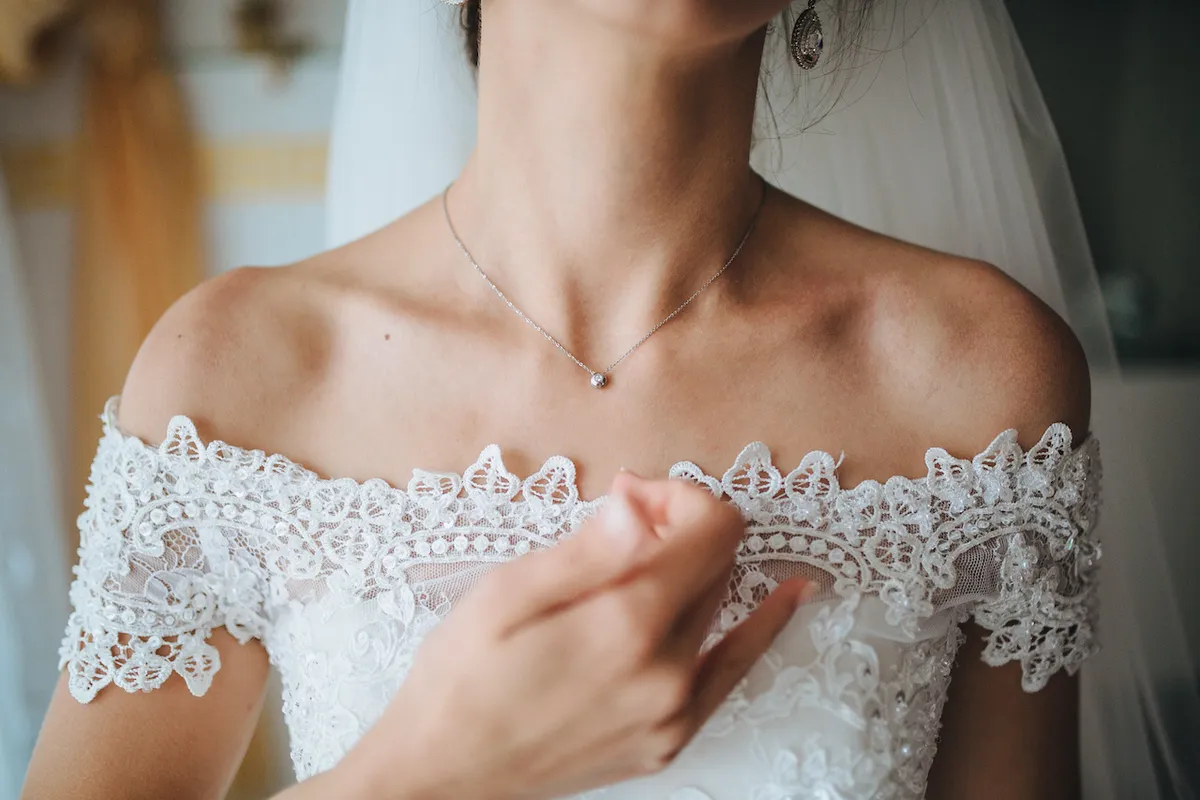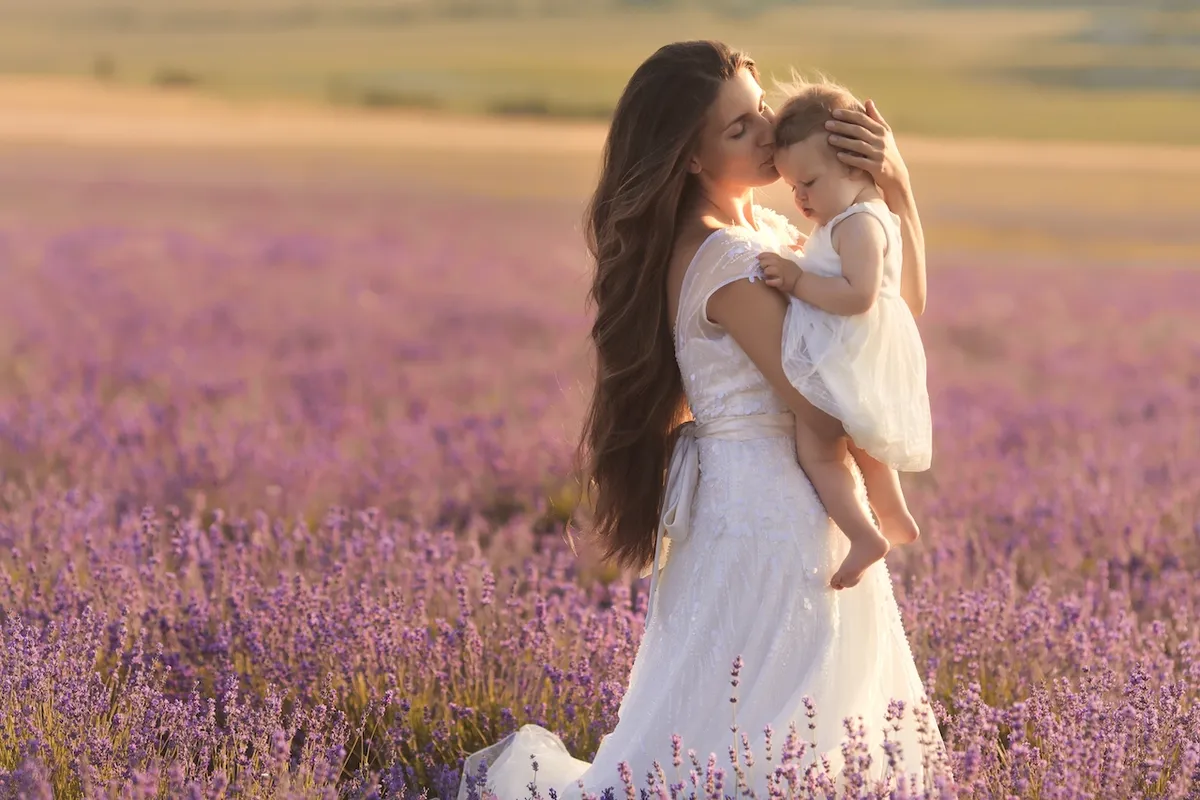
Choosing the perfect wedding dress can be a journey through time and tradition. For centuries, bridal gowns have intertwined with cultural significance and fashion trends. This article unveils the rich tapestry of history behind wedding dresses from various cultures, exploring how they reflect beliefs and customs.
Discover the colors and styles that have celebrated love across the globe!
Origins and Evolution of Wedding Dresses
The origins and evolution of wedding dresses are influenced by both Eastern and Western cultures, as well as folklore and traditional beliefs. Historical wedding dresses in Western European societies have also shaped the styles seen around the world today.
Wedding dresses in different areas of the world reflect unique cultural influences and customs.
Influence of Eastern and Western Cultures
Eastern and Western cultures both have shaped how wedding dresses look. In the East, brides often wear dresses that are red. This color means good luck and happiness. The details on these dresses can be very special.
They might show dragons or phoenixes which are symbols of strong love and a good future.
In the West, white wedding gowns became popular long ago. People living in Europe started this trend because they thought white meant purity and innocence. These days, lots of women in America and Europe choose to get married in a white dress.
Both parts of the world add their own touch to what brides wear. Their ideas mix together to make new styles for wedding dresses around the globe. This blend makes sure bridal fashion keeps changing with time.
Folklore and Traditional Beliefs
Folklore and traditional beliefs have significantly influenced the design and style of wedding dresses across different cultures. Ancient customs and legends often shape the choice of fabrics, colors, and embellishments in bridal attire.
For example, in some cultures, certain symbols or motifs on a wedding dress are believed to bring luck or ward off evil spirits. These deep-rooted beliefs continue to influence the creation of modern bridal gowns.
The stories and traditions woven into these dresses serve as a testament to the rich cultural tapestry of weddings around the world.
Historical Western European Wedding Dresses
Western European wedding dresses have a rich history dating back centuries. In medieval times, brides favored rich colors like red and blue, with embellishments symbolizing wealth and status.
However, in the 19th century, Queen Victoria popularized the white wedding dress trend. The white gown represented purity and virtue within Western cultures, eventually becoming a timeless symbol of weddings around the world.
Bridal fashion in Western Europe has evolved greatly over time. From intricate lace and corsets to modern silhouettes and necklines, each era has brought new trends while still honoring traditional elements.
Wedding Dresses in Different Areas of the World
Wedding dresses vary across cultures, reflecting diverse traditions and customs. For instance, in East Asia, brides often wear vibrant red dresses symbolizing luck and happiness. Meanwhile, in India, bridal attire includes richly colored fabrics with intricate embroidery representing their cultural heritage.
In the Middle East, brides may don ornate and modest white gowns adorned with traditional motifs to symbolize purity and sanctity.
In Africa, wedding garments feature bold patterns and colors that hold significant cultural meanings within different tribal communities. Similarly, indigenous communities in the Americas incorporate unique elements into their wedding attire that reflect their cultural identity rooted in history and folklore.

Significance and Symbolism of Wedding Dress Colors
In Western culture, white wedding dresses symbolize purity and innocence, while in Eastern cultures, red is the traditional color for bridal attire representing luck and prosperity.
To learn more about the fascinating history of wedding dresses in different cultures and the symbolism behind their colors, keep reading!
White Dresses in Western Culture
In Western cultures, white wedding dresses gained popularity in the 19th century when Queen Victoria of England wore a white gown for her marriage to Prince Albert. Before that time, brides chose garments in various colors, with blue being a popular choice as it symbolized purity and represented fidelity.
However, Queen Victoria's iconic white dress set a trend that would endure for centuries. White came to symbolize innocence and virtue, becoming the traditional color for wedding dresses in many Western cultures.
Throughout history, cultural traditions have influenced the choice of attire worn by brides during their weddings. These customs have evolved over time due to changes in fashion trends and societal influences.
Red Dresses in Eastern Culture
Red wedding dresses hold significant cultural importance in Eastern societies, symbolizing good luck, prosperity, and happiness. In many Asian countries such as China and India, red is the traditional color for bridal attire.
Red symbolizes joy and blessings for the newlyweds, reflecting their hopes for a fruitful and harmonious union. The intricate embroidery and designs on these red dresses often incorporate symbols of luck, fortune, and happiness within the marriage.
This deep-rooted symbolism has kept red as the preferred choice for bridal gowns in Eastern cultures for generations.
The selection of these striking red wedding dresses reflects an enduring attachment to tradition while celebrating the rich cultural heritage of Eastern societies through vibrant colors and meaningful symbols.
Other Colors in Different Cultures
In various cultures, wedding dresses come in a wide range of colors beyond white and red. In India, brides often wear vibrant hues like pink, green, or purple to symbolize joy, prosperity, and fertility.
In China, traditional bridal gowns are adorned with intricate embroidery in auspicious shades such as gold, silver, and blue. Similarly, African brides showcase their cultural heritage by donning colorful fabrics with rich patterns that hold special meanings within their communities.
Each color tells a unique story and holds deep significance in the context of marriage customs.
Ancient traditions from around the world reveal a diverse array of symbolic colors used in wedding attire. These distinct hues reflect the values and beliefs cherished by different societies for generations.
Modern Trends in Wedding Dresses
Modern trends in wedding dresses are heavily influenced by the world of fashion and the media, leading to a plethora of options for brides. Traditional elements from different cultures are also being incorporated into modern designs, showcasing a beautiful mix of old and new.
Influence of Fashion
Fashion plays a significant role in shaping the evolution of wedding dresses across different cultures. The influence of fashion trends can be seen in the styles, fabrics, and designs of bridal wear over time.
As global fashion trends change, they impact the choices and preferences for wedding attire, leading to a fusion of traditional elements with modern aesthetics. Bridal fashion history reflects how societal changes and media representation have shaped the way wedding dresses are perceived and designed.
Ethnic wedding garments have also been influenced by contemporary fashion, resulting in a diverse array of options for modern brides seeking to incorporate both cultural traditions and current styles into their nuptial attire.
Impact of Media and Society
Media and society play a significant role in shaping modern trends in wedding dresses. The portrayal of weddings and bridal fashion in movies, television shows, and social media has a profound influence on how individuals perceive wedding attire.
Trends set by celebrities and influencers often dictate popular styles, colors, and designs of wedding dresses. Additionally, the widespread availability of information through digital platforms has led to greater awareness and appreciation for diverse cultural wedding attire, encouraging individuals to incorporate traditional elements into their own nuptial garments.
The impact of media extends beyond visual representations to include discussions about the symbolism and significance of wedding dresses. Through various forms of media, conversations about the historical roots and cultural meanings attached to different aspects of bridal wear have contributed to an increased understanding and celebration of diverse traditions around the world.
Incorporation of Traditional Elements
Wedding dresses today often blend traditional elements with modern trends, reflecting cultural heritage and individual style. From intricate embroidery to symbolize prosperity and good fortune in Eastern cultures, to the use of family heirlooms or vintage lace in Western ceremonies, these traditional elements add unique significance to bridal attire.
The incorporation of hand-crafted details, such as beadwork or indigenous fabric patterns, celebrates diversity and honors ancestral customs while creating timeless and meaningful wedding ensembles that resonate with both the past and the present.
Incorporating traditional elements into wedding dresses connects brides to their roots and adds a personal touch to their special day. Whether it's a nod to ancient customs through symbolic colors or incorporating regional textiles into gown designs, these traditional elements infuse each dress with cultural richness and sentimental value.

Conclusion
In conclusion, the history of wedding dresses in different cultures reveals a rich tapestry of traditions and symbolism. The evolution of bridal wear has been influenced by both Eastern and Western cultures over time.
The significance of colors in wedding attire reflects deep-rooted cultural beliefs and customs, with white symbolizing purity in Western culture and red symbolizing prosperity in Eastern culture.
Modern trends continue to blend tradition with contemporary fashion, shaping the future of wedding dresses. Exploring these diverse bridal dress customs provides valuable insight into the global significance of marriage attire.
Consider further exploration of this topic to gain a deeper appreciation for the beauty and diversity of wedding dress traditions worldwide.
Get legally married online
In partnership with Courtly, get legally married online.
From start to “I do.” Courtly team is fully committed to the cause: getting you married. They've done more remote weddings than anyone. Thousands of couples have counted on Courtly and we know what it takes to secure your legal marriage certificate.
Also, enjoy an exclusive discount available only to the MarryOnChain community! Use code MARRYONCHAIN to get $75 off your wedding.
RelatedRelated articles
All posts




